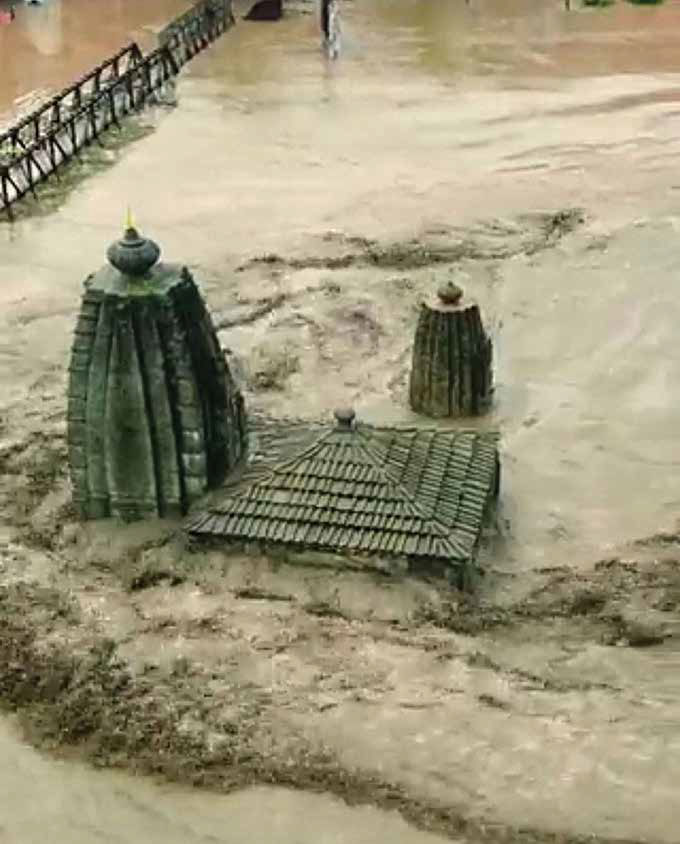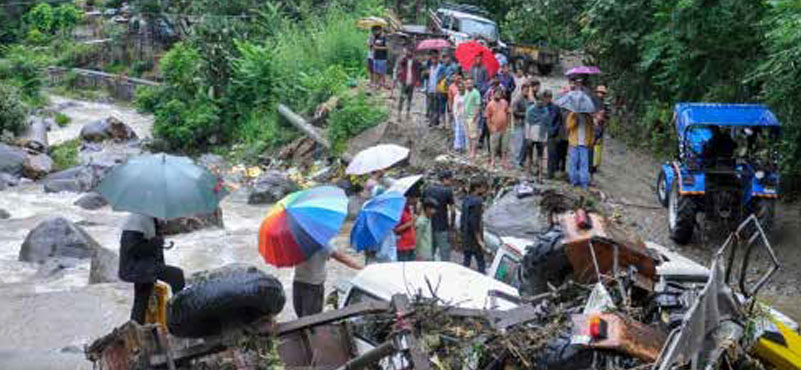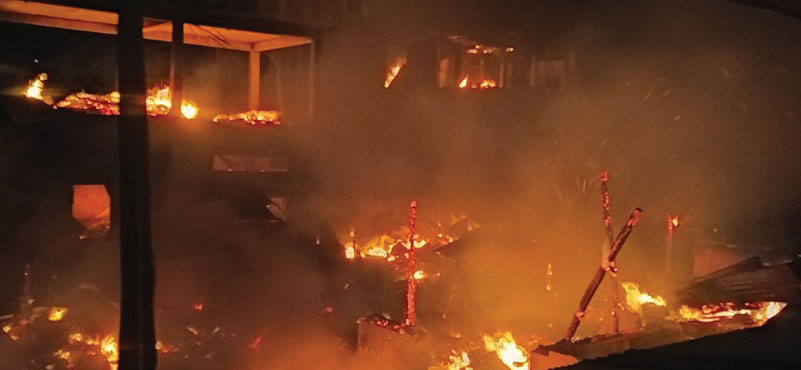Nature has started reclaiming what was always rightfully hers. Respect that and do not provoke her again.
The nation, and indeed in many parts of the world, there has been total shock at what destruction the incessant rains have caused to life and living. Can this all be blamed on climate change, as we are so often found doing? Brushing aside our own responsibility, passing the buck to issues arising out of climate change. The single biggest problem in our hill states has been caused by uncontrolled blasting. This disturbs the eco-system and damages what Nature has built. First thing first, this should be stopped immediately. All else will follow.
Himachal has lost more than 110 lives, dozens of vehicles, hundreds of buildings and bridges, and many kilometres of roads. But one fact is clear – the maximum destruction of lives and public and private party has occurred in the river valleys of the Beas and Ravi, and along the two four laned arteries of the NHA – Parwanoo-Solan and Mandi-Manali. It is no coincidence that these are precisely the alignments where our policy makers have caused the maximum devastation of environment.
Illegal and legal mining, building construction on steep slopes and the rivers’ flood plains, hydel projects with their attendant blasting and muck dumping, road construction and widening, deforestation of thousands of trees. All scientific and expert warnings were ignored, and life went on as usual in the interests of ‘tourism’ and ‘development’.
The four-lane highway between Parwanoo and Dharampur also no longer exists: after spending Rs. 4000 crores and ten years on converting a two lane into a four lane we are now left with the original two-lane highway! The cause here is not a river but a mountain slope, and unprofessional engineering again. The original road was widened by cutting vertically into the mountain slopes, sometimes as much as 15 to 20 metres.
 This constant road construction has generated millions of tonnes of muck which has just been dumped into the rivers, raising their beds, constricting their width and reducing their carrying capacity. Just imagine, the Kiratpur-Manali four lane alone has 21 tunnels – where do you think all that excavated muck has gone? We have been given to understands they have been dumped in landfills at an enormous cost involved shown in estimates and paid to the contractors. There is considerable scepticism on how much this has been done; could these have been merely dumped in the nearest river or just rolled down the hill-side! Some short cuts, in haste to complete the projects fast as required of them.
This constant road construction has generated millions of tonnes of muck which has just been dumped into the rivers, raising their beds, constricting their width and reducing their carrying capacity. Just imagine, the Kiratpur-Manali four lane alone has 21 tunnels – where do you think all that excavated muck has gone? We have been given to understands they have been dumped in landfills at an enormous cost involved shown in estimates and paid to the contractors. There is considerable scepticism on how much this has been done; could these have been merely dumped in the nearest river or just rolled down the hill-side! Some short cuts, in haste to complete the projects fast as required of them.
Hydel projects too have played their part in the destruction. They obstruct the natural flow of these rivers, allow the building up of muck and sediment, and then release them in a torrent when they open their floodgates – it is this, rather than just the waters, which cause the maximum damage, especially to buildings and bridges, on impact. These dams are touted as flood control mechanisms, but in fact the opposite is true, at least on mountain rivers. They retain vast volumes of water (which is their revenue generation inventory, after all) till the last moment; when they release these waters, the consequences downstream are catastrophic; most of the flooding and destruction in Pandoh Market and Mandi this time was caused by the opening of all five flood gates of the Pandoh Dam.
What we need to do is stop all hydel projects, stop vertical cutting of slopes, build no roads on flood zone and clear the debris and create say 200 m long and 20-30 m wide water harvesting pits, in all low-lying areas. These should also be created particularly when you are going up the hills. At the bottom of the road create the water harvesting pit. These, when created, will help in recharging the ground water, as well as help in dewatering the excessive rain flow. We need to provide these pits in all low-lying areas and I assure you, once it is done, it will be a win-win for everyone.
We will have enough ground water to enable us to meet the water supply requirements. It will also avoid flooding, thereby saving precious pavements from being damaged. It will result in substantial saving in maintenance funds, plus will ensure that there is no inconvenience to the citizens.
I am hopeful the Government will take note and thereafter implement these suggested measures to ensure we do not have such catastrophe again.
ABOUT THE AUTHOR
 Kiran Kapila is Chairman ICT , FIDIC Ambassador and former Executive Member, FIDIC , Past President CEAI , President Emeritus , International Road Federation (IRF) Geneva.
Kiran Kapila is Chairman ICT , FIDIC Ambassador and former Executive Member, FIDIC , Past President CEAI , President Emeritus , International Road Federation (IRF) Geneva.




































